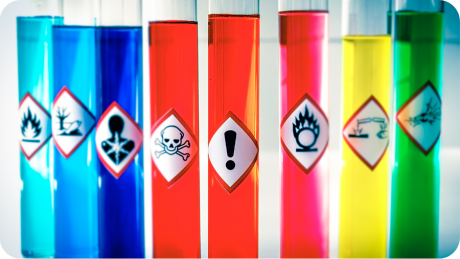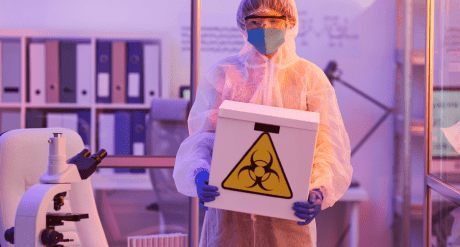
What’s Trending In Compliance In October 2023

This blog was originally posted on 24th October, 2023. Further regulatory developments may have occurred after publication. To keep up-to-date with the latest compliance news, sign up to our newsletter.
At Compliance & Risks we help manufacturers, retailers and their supply chain partners to monitor and manage global regulations via C2P, our compliance knowledge management platform.
These are some of the top trending compliance topics that generated the most interest globally for October 2023.
1. USA: Toxic Substances Control Act (TSCA), Reporting and Recordkeeping Requirements for Perfluoroalkyl and Polyfluoroalkyl (PFAS) Substances, Final Rule, 88 FR 70516, October 2023
The US Environmental Protection Agency (EPA) has issued a rule on reporting and recordkeeping requirements for Per- and Polyfluoroalkyl Substances (PFAS) under the Toxic Substances Control Act (TSCA). In accordance with obligations under TSCA, as amended by the National Defense Authorization Act for Fiscal Year 2020, EPA has promulgated a regulation requiring reporting of the manufacture, use, and disposal of PFAS chemical substances.
This regulation requires persons that manufacture (including import) or have manufactured these chemical substances in any year since 1 January 2011, to submit information to EPA regarding PFAS manufacture, uses, production volumes, byproducts, disposal, exposures, hazards, and existing information on environmental or health effects.
EPA has identified at least 1,364 chemical substances and mixtures that are PFAS and would be subject to reporting under the final rule, if they have been manufactured. The manufacture of PFAS as a byproduct is not exempt for the purpose of this rule; neither are small manufacturers exempt from reporting and recordkeeping requirements of this rule under the TSCA section 8(a)(7).
Entities potentially affected by this action are those who are currently, or have previously, manufactured (as defined by statute at 15 U.S.C. 2602(9) to include import) a chemical substance that is a PFAS between 1 January 2011 and the effective date of the final rule, which is 13 November 2023. This rule is limited to manufacturers (including importers) of PFAS that are covered as a “chemical substance” under TSCA section 3(2) and it does not require reporting on substances that have been excluded from the definition of “chemical substance” in TSCA section 3(2)(B). Those exclusions include, but are not limited to, the following:
- Any pesticide (as defined by the Federal Insecticide, Fungicide, and Rodenticide Act) when manufactured, processed, or distributed in commerce for use as a pesticide;
- Any food, food additive, drug, cosmetic, or device, as defined by the Federal Food, Drug, and Cosmetic Act, when they have been manufactured, processed, or distributed in commerce for use as a food, food additive, drug, cosmetic or device;
- Tobacco or any tobacco product;
- Any source material, special nuclear material, or byproduct material as such terms are defined in the Atomic Energy Act of 1954; and
- Any article the sale of which is subject to tax that is imposed by Section 4181 of the Internal Revenue Code of 1954.
2. EU: Registration, Evaluation, Authorization and Restriction of Chemicals (REACH), Regulation (EC) 1907/2006 – Amendment – (on adding synthetic polymer microparticles to Annex XVII) Regulation (EU) 2023/2055
On 25 September 2023, the EU Commission adopted an amendment to the EU REACH Regulation setting down measures to restrict adding microplastics to products intentionally. The Amendment prohibits the sale of microplastics on its own as well as the sale of products to which microplastics are added on purpose and that release these microplastics when used. Certain derogations and transition periods apply.
As explained by the EU Commission, the purpose of the restriction is to reduce emissions of intentional microplastics from as many products as possible, therefore the restriction defines “microplastics” quite broadly, covering all synthetic polymer particles below 5mm that are organic, insoluble and resist degradation.
Some of the products affected by the restriction are:
- Cosmetics (microbeads);
- Detergents and fabric softeners;
- Glitter and toys;
- Fertilizers and plant protection products;
- Granular infill material used on artificial sport surfaces.
The Regulation entered into force on 17 October 2023 and the sale ban on plastic glitter and cosmetics containing microbeads applied immediately. However, certain other restrictions will only take effect over the next few years.
The following products are exempted from the scope of the restrictions of this Regulation:
- Products that contain microplastics but do not release them or their release can be minimized, e.g. construction materials;
- Products used at industrial sites;
- Products already regulated by other EU legislation, e.g. medicinal products, food and feed.
3. UK: Product Security and Telecommunications Infrastructure (Security Requirements for Relevant Connectable Products), Regulations, SI No. 2023/1007
Published on 19 September 2023, these Regulations establish security requirements for manufacturers of relevant connectable products and prescribe conditions that the products need to meet for deemed compliance of a security requirement as part of the regulatory regime set out in Part 1 of the Product Security and Telecommunications Infrastructure Act 2022.
Schedules to the Regulations set out the following:
- The security requirements with which manufacturers of relevant connectable products have to comply in relation to UK consumer connectable products;
- Conditions which, if met, will deem the manufacturer compliant with the relevant corresponding security requirement;
- The list of products to be exempted from being considered relevant connectable products for the purposes of section 4 (relevant connectable products) of the Telecommunications Infrastructure Act;
- Minimum information required to be stated in a statement of compliance.
The Regulations will come into force on 29 April 2024.
4. USA: Consumer Product Safety Improvement Act (CPSIA), Safety Standard and Warning Label for Button Cell or Coin Batteries and Products Containing Them, 16 CFR 1112 and 1263, Final Rule, 2023
On 21 September 2023, the US Consumer Product Safety Commission (CPSC) published both a Direct Final Rule and a Final Rule regarding Safety Standard for Button Cell or Coin Batteries and Consumer Products Containing Such Batteries.
In the Direct Final Rule, the CPSC notes that, in February 2023, as required by Reese’s Law, they had issued a notice of proposed rulemaking (NPR) in which they preliminarily determined that no existing voluntary standard met the requirements in Reese’s Law at that time. The goal of Reese’s Law is to eliminate or adequately reduce the risk of injury from ingestion of button cell or coin batteries by children six years old and younger. However, since then, the CPSC has determined that one voluntary standard, which has been substantially revised since the initial publication of the NPR, adequately meets the requirements in Reese’s Law with respect to performance and labeling requirements for consumer products containing button cell or coin batteries.
Per Reese’s Law, after a determination of sufficiency by the CPSC, a qualifying voluntary standard would be treated as a consumer product safety rule. Today, the CPSC is publishing that determination, as well as the Direct Final Rule to incorporate the voluntary standard, ANSI/UL 4200A, Standard for Safety for Products Incorporating Button Batteries or Coin Cell Batteries, by reference into the regulations. Consumer products subject to performance and labeling requirements covered by this Direct Final Rule must be tested and certified as compliant.
This Direct Final Rule is effective 23 October 2023. Consumer products containing button cell or coin batteries which are manufactured or imported after 23 October 2023, must comply with this Direct Final Rule. The CPSC, recognizing the limited testing availability, is granting a 180-day transitional period of enforcement discretion from 21 September 2023 through 19 March 2024. Third party testing and certification of children’s products that are subject to this Rule is not required until on or after 20 December 2023.
In addition to this Direct Final Rule, the CPSC also published a Final Rule. To reiterate, as required by Reese’s Law, the CPSC issued an NPR in order to establish performance and labeling requirements for consumer products that contain button cell or coin batteries, as well as requirements for the labeling of button cell or coin battery packages. As previously noted, this NPR was published in an attempt to eliminate, or adequately reduce, the risk of injury from ingestion of button cell or coin batteries by children six years old and younger. The CPSC is issuing this Final Rule in order to complete the requirements per Reese’s Law for warning labels on the packaging of button cell or coin batteries. Button cell or coin battery packaging that is subject to this Final Rule is required to be certified as compliant with these warning label requirements.
This Final Rule is effective 21 September 2024. Button cell or coin battery packaging that has been manufactured or imported after 21 September 2024 must comply with this Final Rule.
5. France: Identification of Hazardous Substances in Waste-generating Products, Order, August 2023
On 30 August 2023, the French Ministry for Ecological Transition and Territorial Cohesion issued an Order on the Identification of Hazardous Substances in Waste-generating Products.
Article L 541-9-1 of the French Environmental Code (as introduced by the Circular Economy Law 2020-105) requires that consumers are provided with information about the presence of dangerous substances in waste-generating products.
To implement this Article, Decree No 2021-1285 states that such substances are those that are listed as substances of very high concern (SVHC) under the EU REACH Regulation or that are not on the list but present a level of concern comparable to substances of very high concern and that are designated by Order of the Ministry of Ecological Transition.
The present Order identifies the following two substances as hazardous substances in waste-generating products:
- Diisooctyl phthalate (DIOP), CAS No 27554-26-3
- 1,3-benzenediol (resorcinol), CAS No 108-46-3
This Order entered into force on 15 September 2023.
Unlock Market Access
This information is based on the most viewed regulations on C2P this month. If you would like to see C2P in action, join us for a bite-sized high-level demo to witness the true power behind C2P.
Simplify Your Product Compliance Process with C2P
Design & build new products with full confidence you’ve met all compliance obligations.


